Disclosure: We may get commissions for purchases made through links in this post.
Sooner or later, you would need to have new tires installed or mounted due to wear and tear. These new tires will also require balancing to ensure better drive train performance, smooth ride, and reduced tire wearing; in fact, balancing is also part of regular car maintenance. Knowing how much it costs to mount and balance tires allow you to allot a budget to keep your vehicle in tip-top condition.
So, how much does it cost to mount and balance tires? The exact cost of mounting and balancing your tires will depend on many factors, such as tire size, your location, and the company doing the job. For instance, off-road vehicle tires will be around the mid-range price since they have big tires.
To help you set the right budget, let’s look into the average cost of balancing and balancing and mounting services. We’ll also talk about companies that offer some of the most affordable services for most types of vehicles. Then, we’ll provide answers to some of the most frequently asked questions about tire mounting and balancing.
The number one factor determining the cost of mounting and balancing your tires is your vehicle’s type. The larger the vehicle, the higher the price since they have larger tires.
As of writing, you’ll expect to pay from $13 to $45 to mount one tire or $52 to $180 for four tires. In terms of balancing, it would be around $10 to $15 for each tire or approximately $40 to $60 for all tires.
However, the price would be a bit higher if you plan to have winter tires installed. Expect to add from $8 to $10 per tire.
The price range itself tells you that some companies charge lower than others. Likewise, most companies offer packages wherein balancing is already included in the installation or mounting price. Some even include other services.
Some even include other services.
For reliable companies that can mount and balance your off-road vehicle tires at a cost-efficient price, the top options are Walmart, Discount Tire, BJs, NTB, and Costco.
Among the most popular retail corporations in the US, Walmart Inc. offers several tire services for cars, ATVs, and UTVs.
For mounting and balancing, the current package ranges from $48 to $60 for four tires or $12 to $15 per tire if you bought the tires from Walmart. The rate includes lifetime rotation and balancing for every 7,500 miles and new valve stems, TPMS service, and 50-mile lug re-torque. Since tire disposal isn’t included, expect to pay around $1.50 for each tire or $6.
An optional add-on is the road hazard warranty that costs $10 per tire or $40 for the four tires bought at Walmart. It will cover flat tire repairs and any unforeseen road hazard and replace non-repairable tires with at most 25% tread wear.
Considering every fee, service, disposal, and warranty, how much does it cost to mount and balance tires at Walmart? Well, you would spend between $90 and $106.
On the other hand, you would need to pay an additional $10 per tire or $40 for four tires if you purchased the tires from a different company. Thus, expect to pay between $88 to $100 for four tires. Of course, you would also need to pay the disposal fee if you’ll leave the old tires.
So, how much in total would you pay if you didn’t purchase the tires at Walmart? That would be between $94 and $106, without a warranty, of course.
Don’t prefer to have your tires balanced and mounted at Walmart? Maybe because of the long line, or they’re not a tire-specific company? Discount Tire would be your best option, whether you have a small car, Jeep, ATV, or UTV.
As a USA-based tire and wheel retailer, the quote provided by Discount Tire for the wheel and tire package you bought from them already includes services. If you only purchased the tires or have tires from other companies, you’d be charged around $21 to $33 per tire or $84 to $132 for four tires. This installation price covers mounting, lifetime balancing and rotating, new valve stems, flat repairs, airchecks, and inspections.
If you only purchased the tires or have tires from other companies, you’d be charged around $21 to $33 per tire or $84 to $132 for four tires. This installation price covers mounting, lifetime balancing and rotating, new valve stems, flat repairs, airchecks, and inspections.
Similar to Walmart, the disposal fee isn’t included in the quote. Discount Tire will charge around $2.75 per tire or $11 for four tires.
How about the road hazard coverage at Discount Tire? Unlike other tire servicing companies, Discount Tire refers to this as the Certificate for Repair, Refund, or Replacement. Its cost is approximately 15% or 16% of the tire’s price tag. This “warranty” is valid for three years from the date of purchase.
Although you’ll find that BJs Tire Center offers the greatest value for your money, they’re not at the top of our list because they only install tires bought from them. Nonetheless, they have several tire brands available such as Goodyear, Michelin, and Bridgestone.
Members of the warehouse club would need to pay around $20 for installing or mounting one tire. This package includes lifetime balancing and rotation, inflation checks, flat repairs, new valve systems, tire disposal, and a three-year road hazard warranty.
However, you would need to pay approximately $5 per tire for the TPMS kit. Therefore, in total, you would need to pay about $60 for four tires.
Another option you might want to consider because they have branches in several states, NTB or National Tire & Battery, doesn’t offer better packages than Walmart and Discount Tire.
The company’s fee is around $17 per tire or $68 for four tires, including lifetime balancing and rotation. For the TPMS kit, you would need to pay $8 per wheel, while you would need to spare $3 per tire for the disposal fee. Lastly, the cost for the hazard warranty is 16% of the tire’s cost. Overall, you need to prepare at least $122 for four tires.
The best thing about NTB is they have lots of promotions and coupons that you can take advantage of by visiting their deals and savings page. They also offer many car maintenance services, so you can have almost everything done to help save you time.
They also offer many car maintenance services, so you can have almost everything done to help save you time.
Exclusively for members, Costco offers tire mounting at a rate of $18.99 per tire or almost $76 for four tires, which include nitrogen tire inflation, lifetime balancing, rotation, air pressure checking, and flat repairs, plus new valve stems and tire disposal. On top of that, you’ll enjoy five years of road hazard warranty. For TPMS, you would need to pay an additional $3 per tire.
One problem with Costco is that they don’t install UTV tires for street use and ATV tires. However, they sell Greenball tires (View on Amazon) for these rides and have them delivered directly to your home. Also, you’ll only find three tire brands for cars: BFGoodrich, Michelin, and Bridgestone (View on Amazon).
Nonetheless, members will also enjoy service center discounts through the Costco Auto Program.
Let’s tabulate the numbers, perks, and additional costs to help you compare each company easily and quickly.
| Company | MinimumCost per Tire | Inclusions | AdditionalCosts per Tire |
|---|---|---|---|
| Walmart | $15 ($25 for non-Walmart tires) | TPMS KitsLifetime Balancing and RotationLug Re-torqueNew Valve Stems | $10: Road hazard warranty$1.50: Tire Disposal |
| Discount Tire | $21 | TPMS KitsLifetime Balancing and RotationNew Valve StemsInflation checks | $2.75: Tire Disposal$15 to 16% of Tire Cost: Warranty |
| BJs | $20 | Lifetime Balancing and RotationNew Valve StemsInflation checksFlat RepairsTire DisposalRoad Hazard Warranty (Three Years) | $5: TPMS Kit |
| NTB | $17 | Lifetime Balancing and Rotation | $8: TPMS Kit$15 to 16% of Tire Cost: Warranty$3: Tire Disposal |
| Costco (Members-Only) | $18.99 | Lifetime BalancingLifetime RotationLifetime Inflation ChecksLifetime Flat RepairsNew Valve SystemsTire DisposalRoad Hazard Warranty (Three Years) | $3: TPMS Kit |
There would be times when you would only need to have your tires balanced without replacing the tires, as this is part of maintenance.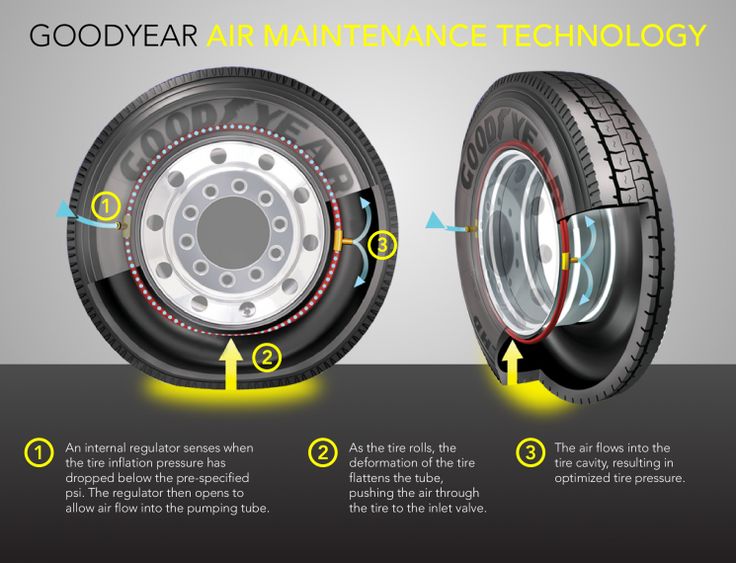 Most experts suggest that you have them balanced every 24 months or every 5,000 to 7,500 miles.
Most experts suggest that you have them balanced every 24 months or every 5,000 to 7,500 miles.
Thus, although the companies we mentioned above include lifetime balancing, you might not currently enjoy the said perk since you have your tires mounted by a different company.
Here are expected average costs per tire when you visit the companies mentioned above:
Now that you’re familiar with the cost to mount and balance tires, you probably have a few questions in mind. We’ve answered common questions to help you understand better why it’s essential to set a budget for tire mounting and balancing.
Understandably, you might want to mount and balance your tires because of the high cost. However, it might cost you more if you do so because you don’t have the right pieces of equipment and tools. You might end up damaging the wheels and tires or not achieving the proper balance, risking your safety and car’s performance.
However, it might cost you more if you do so because you don’t have the right pieces of equipment and tools. You might end up damaging the wheels and tires or not achieving the proper balance, risking your safety and car’s performance.
Whether driving off-road or on-road, professionals do not recommend one-tire replacement due to differences in tread patterns, resulting in stability issues, especially when driving at high speed. You’ll also notice vibrations, noises, and other unpleasant issues that make driving very inconvenient and unsafe.
You can, however, have two pairs replaced, such as both front tires or both rear tires. Still, it’s always best to have four tires replaced at the same time.
Definitely! There are tire recycling centers where you can bring your old tires, so you don’t have to pay the tire disposal fee. If you’re into DIY crafting, you may also repurpose your old tires into usable and decorative items.
The average cost of mounting and balancing a new set of tires is around the hundred-dollar mark, which will be nearly $150 for larger units like Jeeps and ATVs. Yes, it’s costly because you also need to purchase tires, but it won’t be as expensive as when you get into an accident due to unreliable tires.
The five companies we included on this list allow you to purchase tires without worrying about where you can have them mounted and regularly balanced. Choose the company that works best for your budget and specific needs. If you need to have your ATV or UTV tire (Check Amazon for Price) replaced or serviced, though, Walmart will be your best option and most affordable option.
https://reviews.cheapism.com/best-price-tire-installation-7-chains-face-4204/#close
https://icdsc.org/average-tire-mount-and-balance-cost/
https://www.cashcarsbuyer.com/cost-to-mount-and-balance-tires/
https://www. motorverso.com/cost-to-mount-and-balance-tires/
motorverso.com/cost-to-mount-and-balance-tires/
Picking Tires – What is the average price to get tires mounted and balanced
When getting new tires, you’ll have to pay for the installation service (called mounting and balancing) on top of the tires themselves. But don’t panic.
The mounting and balancing fee is far from exorbitant, and it’s a key factor to on-the-road safety. We’ll break down the cost, and the reason for it, below.
The fee can vary, all depending on various factors like tire size, your location, and the shop you chose.
The average cost ranges from $15 to $60 per tire if you’re getting them mounted and balanced. If you’re only mounting tires, it can range from $6 to $24 per tire.
Mounting is exactly as it sounds. It’s the act of putting your tires onto wheels, then installing those wheels onto your car’s axles.
Balancing gets a little more scientific. A wheel is considered balanced when its center of gravity is exactly like the axis of rotation. Essentially, when the wheel and tire mass are evenly distributed, the tires don’t vibrate when spinning.
A wheel is considered balanced when its center of gravity is exactly like the axis of rotation. Essentially, when the wheel and tire mass are evenly distributed, the tires don’t vibrate when spinning.
To visualize what we mean, think of your washer on its spin cycle. If the clothes are all sticking evenly to the walls, your machine is as quiet as a mouse. But when the weight is unbalanced, it shakes and hums. That may be fine (albeit annoying) with a washing machine, but with your car? Not so much.
Picture that violent, unbalanced spin cycle again. Now think about your car acting that way on the road — yikes!
Mounting and balancing go hand-in-hand because you want your wheels spinning smoothly, especially at high speeds. If your tires are unbalanced, you’ll have a shaky ride. That may not sound too bad, but your vehicle is suffering from those vibrations. And if they remain unbalanced, you’re putting yourself and others at risk on the road.
The cost will vary depending on the area. Sometimes, even locations a few miles apart can have wildly different costs.
If you’re just looking to mount tires, the cost ranges between $6-$24 per tire at major companies like Walmart or Sears. A locally-owned auto shop may cost more, but for something as important as tires, a little extra can go a long way.
If you’d like your tires mounted and balanced, the cost falls between $15 and $60. Balancing is a key factor in driver safety, and it helps extend the life of your new wheels.
The biggest factor in determining cost would be the overall size of the tire. How size is measured depends from shop to shop. Some gauge size by diameter, while others consider the aspect ratio.
Vehicle type may also affect the cost of this service. The average will differ between smaller cars, trucks, and SUVs. Smaller cars hang in the $13-$20 range, while larger ones can get between $30-$45. When you consider larger cars mean larger tires, this makes perfect sense.
Smaller cars hang in the $13-$20 range, while larger ones can get between $30-$45. When you consider larger cars mean larger tires, this makes perfect sense.
A shop’s location will also affect cost. Getting your tires mounted and balanced in New York City can sometimes get up to $40 a tire, while less populated areas range from $15-$20.
It’s important to perform due diligence and check out a good handful of auto shops in your area.
You can save money by calling around. Different auto shops will offer different pricing.
Pro-tip: Find one that offers the most cost-effective deal, not the cheapest. Cheap tires and associated services may cost you more in the long run as they can require more maintenance and earlier replacement.
It’s certainly possible, but unless you’re a professional with the right equipment, leave it to the experts at the auto shop. Without the proper tools and know-how, mounting tires solo can lead to disaster.
Without the proper tools and know-how, mounting tires solo can lead to disaster.
Absolutely! Keep yourself safe on the road by getting your tires balanced now and again. Maintenance is crucial to your safety and the longevity of your tires.
Manufacturers recommend balancing your tires every 3,000 to 6,000 miles. If you’ve encountered any rough terrain lately, you may want to do it sooner.
Tires themselves may be expensive, but installing them will only run you a few extra bucks. Source local auto shops to ensure you get the best bang for your buck.
Did you find this piece helpful? Then consider checking:
How To Take Tire Off Rim
How To Dismount A Tire
How To Use Tire Machine
How To Mount ATV Tires
How To Stretch A Tire
How To Take A Tire Off A Rim Without A Machine
The procedure for servicing cars at tire change stations can take a different amount of time. The exact figure depends on the equipment present and the professionalism of the master. On average, changing the wheels of a car at a tire fitting stretches for 20-30 minutes, in the absence of a serious workload of personnel.
The exact figure depends on the equipment present and the professionalism of the master. On average, changing the wheels of a car at a tire fitting stretches for 20-30 minutes, in the absence of a serious workload of personnel.
Contents
In some cases, the installation procedure can take an hour or more. The exact figure will depend on the type of work performed.
If you put new skates on the wheels, you need to count on at least an hour. The usual replacement of finished wheels is faster. A savvy master can change all discs in a few minutes.
The usual replacement of finished wheels is faster. A savvy master can change all discs in a few minutes.
The need for repairs also affects the efficiency of work. In some situations (vulcanization is required), the procedure may take a day.
Service stations and tire shops in Russia always try to work as quickly as possible. The salary of the master directly depends on the number of clients. Usually the procedure for changing a set of tires from summer to winter does not take more than one hour.
Waiting time can be increased by factors that do not affect the immediate speed of the specialist's work - this is the queue and customer requirements.
Installation of summer tires is more difficult for the master than winter tires. This is argued by the increased rigidity of the rubber. Dense sidewalls are difficult to put on discs, which requires great physical effort.
This difference will not be noticeable to the user. Experienced technicians know how to properly place a product on the machine for fast assembly.
To facilitate the process of changing tires and speed up service, you can foresee a few points in advance and not wait in a huge queue.

Leave a review
Contents:
 ..
.. Wheel rotation is like a physical exercise. Everyone knows to do it, but getting yourself to actually do it can be a challenge. While we can't really help you with fitness motivation, we have plenty of good reasons why you should swap tires every 5,000-13,000 miles.
Tire wear is inevitable when using a car. The location and extent of wear on a tire's contact patch depends on many factors, including the position of the tire on the vehicle. Keep in mind that each axle of a vehicle faces a different external force. For example, the front tires on a front wheel drive vehicle are regularly subjected to more intense stress than the rear tires. Thus, front tires on a front wheel drive vehicle typically experience accelerated wear compared to front tires on a rear or all wheel drive vehicle. Changing the wheels helps even out the wear on all four tires. If you leave the front tires uninterleaved on a front wheel drive car, they will wear out faster than the rears.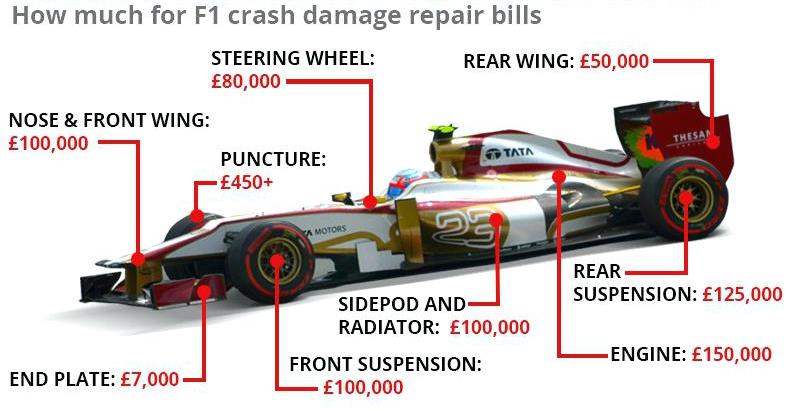 Without a proper check, you will end up with two front tires almost or completely at their maximum tread wear, and two rear tires with life remaining.
Without a proper check, you will end up with two front tires almost or completely at their maximum tread wear, and two rear tires with life remaining.
As a result, you will have to replace some tires prematurely. In some cases, while some of your tires may technically retain their remaining life, it will no longer make sense to pair them with any new tires with unworn tread. So you have to throw away not only worn tires, but also tires with remaining service life!
See also: Tire grip coefficient and factors affecting it
Summarizing all of the above, we can list the main reasons for rearranging tires in places:
Tires are absolutely essential to the efficiency and safety of a vehicle. Keeping your tires in good condition with rotation and other simple maintenance will help keep them wearing evenly which directly affects your vehicle's stability, driving predictability and makes it easier to maneuver safely throughout the life of your tires.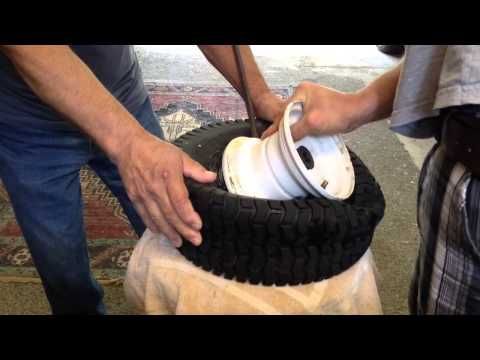 Tires in poor condition can cause the vehicle to vibrate.
Tires in poor condition can cause the vehicle to vibrate.
Remember: uneven tire wear can also affect the stability and handling of your vehicle. Swapping wheels is not only financially sensible, but it also helps to ensure the safety of your driving.
If tires are not rotated and maintained properly, you will likely lose not just a few hundred miles of their life, but thousands. The life of a tire can literally be cut off in the middle if you do not follow the rules for their alternation and do not take other necessary measures for their maintenance.
Tire manufacturers know that rotation is essential to realizing their full tire life. Tire mileage guarantees are most often set by tire manufacturers based on tire rotation. So if you never rotate tires and experience premature tire wear as a result, the manufacturer is unlikely to honor your warranty. In other words, you'll be left on your own with a prematurely worn set of tires and a much more expensive replacement bill.
In other words, you'll be left on your own with a prematurely worn set of tires and a much more expensive replacement bill.
See also: Inflating tires with nitrogen - the pros and cons. What does filling tires with nitrogen give?
The good news is it's inexpensive. That small investment comes back to you in the form of long tire life and sustained vehicle safety and performance. In the long run, the cost of periodic tire rotation will be only a fraction of the amount you have to spend on buying new tires due to premature tire wear. It is also not uncommon for tire shops to offer discounted tire rotation services for regular customers, or from time to time offer to do it for free. So contact the tire shop that installed your tires first - in some cases, your tire rotation costs may be zero.
Helpful Hint: don't forget to label the wheels with the numbers and keep the tire rotation data and receipts.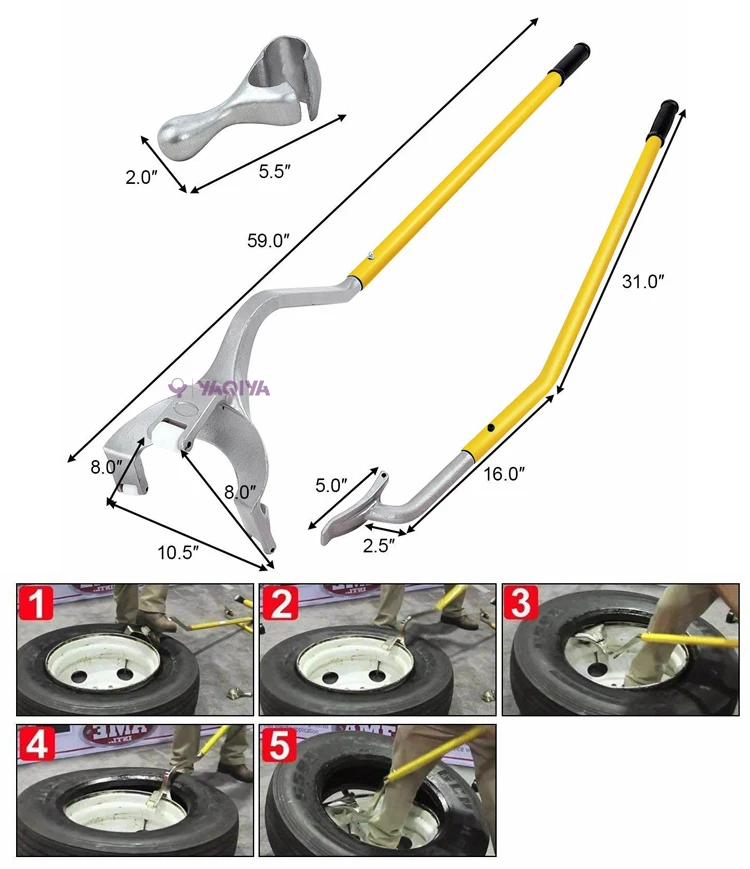 If you ever need to change tires under warranty, having these records will increase your chances of success.
If you ever need to change tires under warranty, having these records will increase your chances of success.
Are you used to doing everything yourself? Then you can rearrange the tires. If you can safely lift the car and remove the wheels, you can change the tires in your garage or on your driveway. In addition to the rearrangement pattern, you need to consider whether your tires are directional or non-directional, symmetrical or asymmetrical, and whether the tire pattern is staggered or square. If you are not sure about at least one of these points, it is better to entrust the work to a professional. Also consider that it is a smart move to put your tires in the hands of a competent professional from time to time. Tire specialists monitor their potential problems, identify misalignment and other issues that can affect tire condition/wear and vehicle performance.
For non-directional tires of the same size, you can use the diagonal swap pattern or move the front tires to the rear diagonal corner and the rear tires forward on the same side.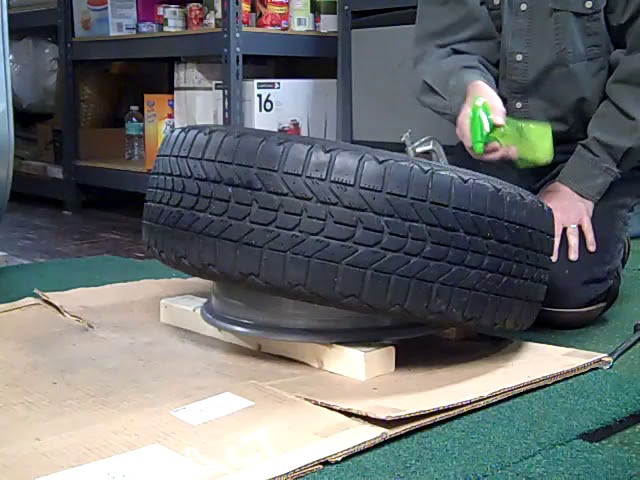
Also, due to the availability of modern tires, there is a need for 2 more rotation schemes:
 If you have a full-size spare tire, it should also be included in the swap plan.
If you have a full-size spare tire, it should also be included in the swap plan. Tire Rotation Chart for RWD and 4WD Vehicles Vehicles with dual rear wheels and non-directional tires may use one of the following rotation patterns:
Winter and studded tires also need to be rearranged so that they serve for a long time and behave adequately on the road.